
Speaking of half-decent flicker photos...
May 23rd, 2009
I finally got one!

1680x1050 wallpaper
The one feature of note that isn't visible here is the bright yellow underneath a flicker's wings and tail--although you can see a faint hint of it at the edge of his folded wing.
Anting
May 21st, 2009
Today, in lieu of pictures, some trivia.
What is anting?- http://birds.suite101.com/article.cfm/what_is_anting
Birds preen their feathers and like to take dust baths or baths in shallow pools of water--many birds also engage in something called anting, where they apply insects, usually ants, or other substances to their feathers and bodies. Strictly, the term anting refers to the use of ants in this activity; however, for lack of another term, the use of other things in a similar manner is often also referred to as anting.
Hundreds of different species of birds have been observed treating their feathers in this unusual way. Songbirds pick up ants and apply them energetically to feathers; tropical mynas use millipedes similarly; rooks stand with their wings spread over rising smoke, crows lie down on ant hills, and poisonous birds may acquire a toxic coating on feathers by rubbing them with poisonous beetles.
What do birds use for anting?
Birds have been observed using various substances on or in their feathers including:How do birds ant?
- Insects and other arthropods, primarily ants, but also beetles, wasps, millipedes, mealworms, and caterpillars.
- Acid substances such as vinegar, mustard, and citrus juices.
- Plant parts such as onions, citrus peels, berries, apple peels, and tobacco.
- Manmade substances such as hair tonic, soap suds, and moth balls.
- Smoke--from burning cigarette butts or chimneys.
Anting behavior takes at least three forms:Why do birds ant?
- Active anting: A bird will often pick up one or more ants in its beak and rub them over its feathers repeatedly. Afterwards, the bird either releases or eats the ants. Songbirds, such as babblers, jays, tanagers, orioles, starlings, and weavers use active anting. Other things are used similarly to anoint the feathers.
- Sometimes birds pick up ants and appear to place them in the feathers, particularly in the area under the wings, releasing them to wander over the skin and feathers.
- Passive anting: Some birds spread their wings over an ant hill, fluff up their feathers and lie down, allowing ants to crawl all over them. Crows, European jays, and waxbills are among the birds that use "passive anting." In a similar way, birds may spread their winds over smoke coming out of a chimney top or over a burning cigarette butt to allow smoke to filter through the feathers.
No one knows for certain why birds ant--there may be several reasons. Some of the possibilities are:
- Insect secretions, such as formic acid produced by ants or defensive chemicals produced by other insects and insect larvae, may kill or repel external parasites such as lice and mites. Similarly plant essences, smoke, and chemicals may serve the same purpose.
- Insect secretions may help to condition and maintain feathers, as preen oil does.
- Birds may place live ants in their feathers to store them as food for later.
- Crawling insects, or their secretions, may sooth skin irritated by parasites, molting, or other causes.
- Rubbing an ant over the feathers before eating it may remove formic acid, making the insect more edible.
- Insects ingested after being rubbed over the feathers may help rid the bird of internal parasites as well as external parasites.
- Anting, in all its forms, may simply feel good--a lot of birds appear to enjoy the experience intensely.
New life, and new life in the making
May 20th, 2009
Canada Geese babies have arrived at Mud Lake. I saw these very young goslings on May 11th, after watching the mother brood for about a month.

1680x1050 wallpaper
Northern Flickers are a species of ground-foraging woodpeckers. They are in my opinion the most beautiful woodpeckers in North America, but they are also the most skittish. I've been trying for over a month to capture their beauty in a picture that does them justice.
This is not that picture. It is, however, interesting because of what the flickers appear to be doing...
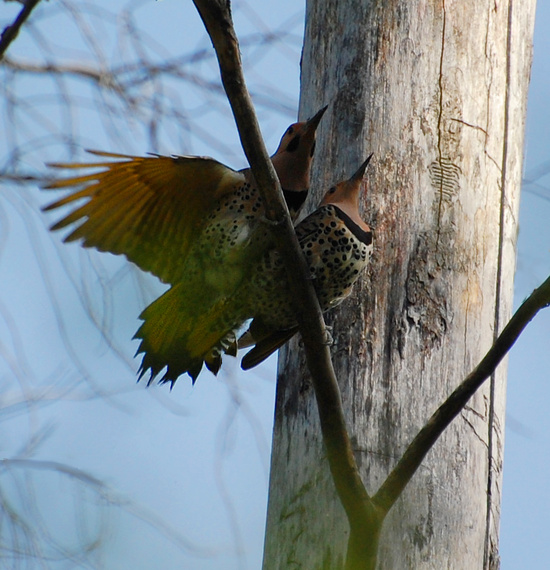
Warbling Vireo, Night Heron
May 19th, 2009

Even the plain birds deserve their day--especially when they sing as prettily as a Warbling Vireo!

1680x1050 wallpaper
A much more successful Black-Crowned Night Heron shot than my last one. Still not a very pretty backdrop, but what can I do for a bird that loves swamps? This Night Heron seems surprisingly gangly--it's more common for them to look plump and hunched over. Maybe he lost weight over his long migration.
The strand hanging out at his neck is a breeding plume. Night Herons grow them quite long in spring to attract mates.
Stealth
May 17th, 2009

I couldn't get him to come out in the open, but I guess it made a good picture this way, too.
White-Crowned Sparrow, first of spring
May 15th, 2009

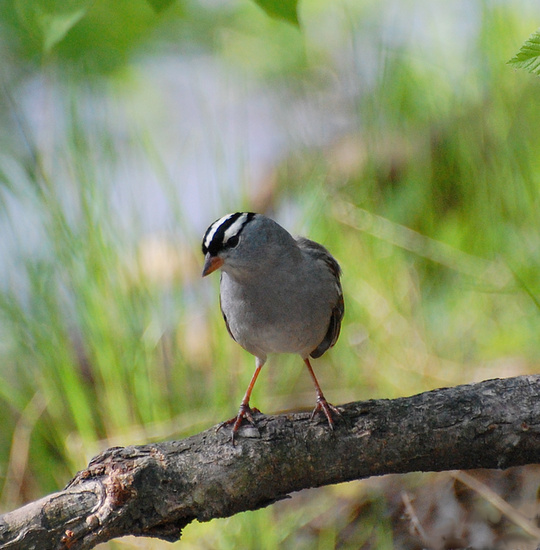
White-Crowned Sparrows are boreal breeders who appear in Ottawa only in migration--in fact, their summer range only just edges into northern Ontario. Like most birds of the far north, they have little fear of humans, hopping out onto open paths, rocky ledges and exposed branches right in front of us. Needless to say, this is pleasant for photographers!
And then sometimes mother nature gives you a big, wet kiss
May 14th, 2009
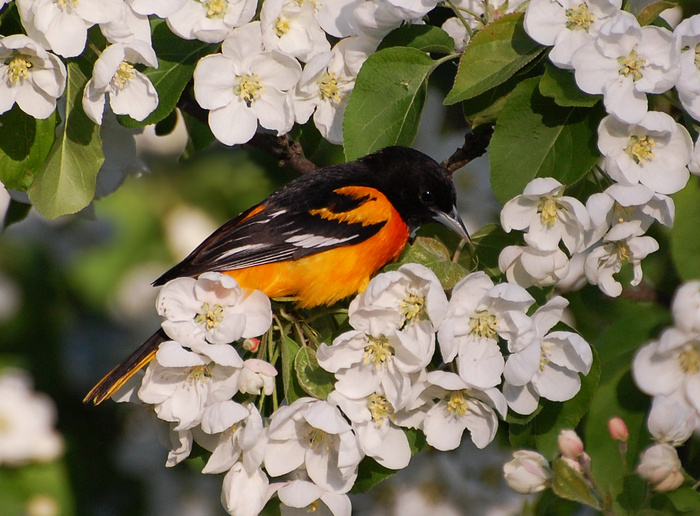
1680x1050 wallpaper

1680x1050 wallpaper

1680x1050 wallpaper
For real. A Baltimore Oriole, my sentimental favorite of all songbirds, landed in a flowering tree, posed, preened, and flopped around while I watched at eye level from a nearby hillside. Mother nature said "mwah!"
Meditative
May 13th, 2009
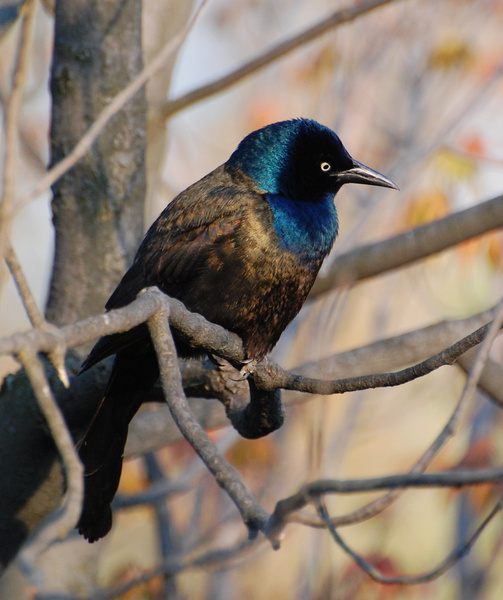
1680x1050 wallpaper
Common Grackle. Another one that came out surprisingly painting-like.
Woodland Blackbird
May 12th, 2009
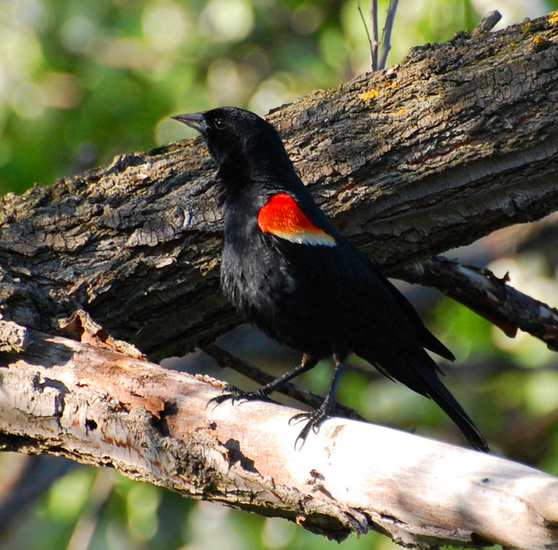
It's so nice to have leaves again, so my bokehs can be green instead of gray!
"The Ridge" at Britannia (a strip of elevated land between Mud Lake and the Deschenes Rapids) is a prime location for Red-Winged Blackbirds in spring. Females nest down on either side of it, and the males perch to sing and display their epaulets. As the season progresses they become more and more lackadaisical about the presence of humans--at least they certainly don't seem to feel intimidated by us. That makes them fun to photograph.
There probably are or soon will be nestling redwings, not that I'm likely to ever see any until they fledge. They'll stay safely hidden in the cattails for now.
Aviamania
May 4th, 2009
We've now entered the stage of bird migration known as "Yellow-Rumped Warblers take over the universe." Females and juveniles have arrived and flocks are everywhere, outnumbering even the chickadees. This one is, I think, a yearling male:
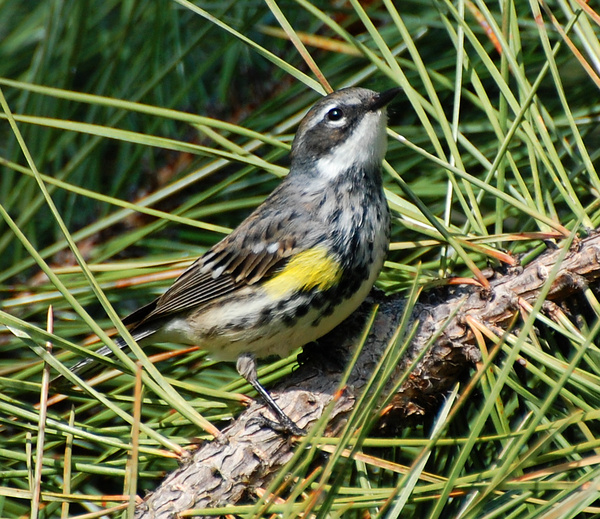
A Great Crested Flycatcher gave me a slightly less awkward view of himself (than last time). This is a common breeding bird at Mud Lake and many other places--and one of the noisiest! Its "crest" is really just a ruffling of the crown feathers and is not always apparent.

Not many new species today. There's more to come, but we're in a lull. I did see my first Barn Swallow of the year, and, belatedly, this:
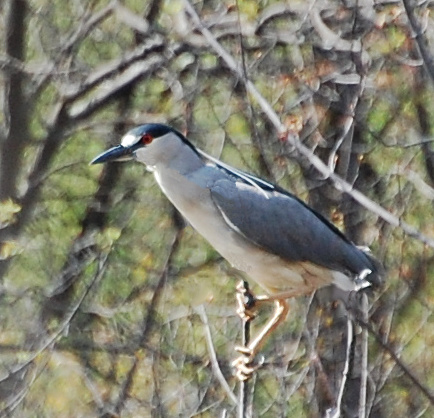
This picture sucks, owing to the fact that it was taken in a swampy tangle of woods from about a hundred feet away. But I give a large leeway for interesting birds that I've never managed to photograph before. This is a Black-Crowned Night Heron. Several pairs of them breed near Mud Lake each year. It's not obvious from the picture, but they stand about two feet high.
|
